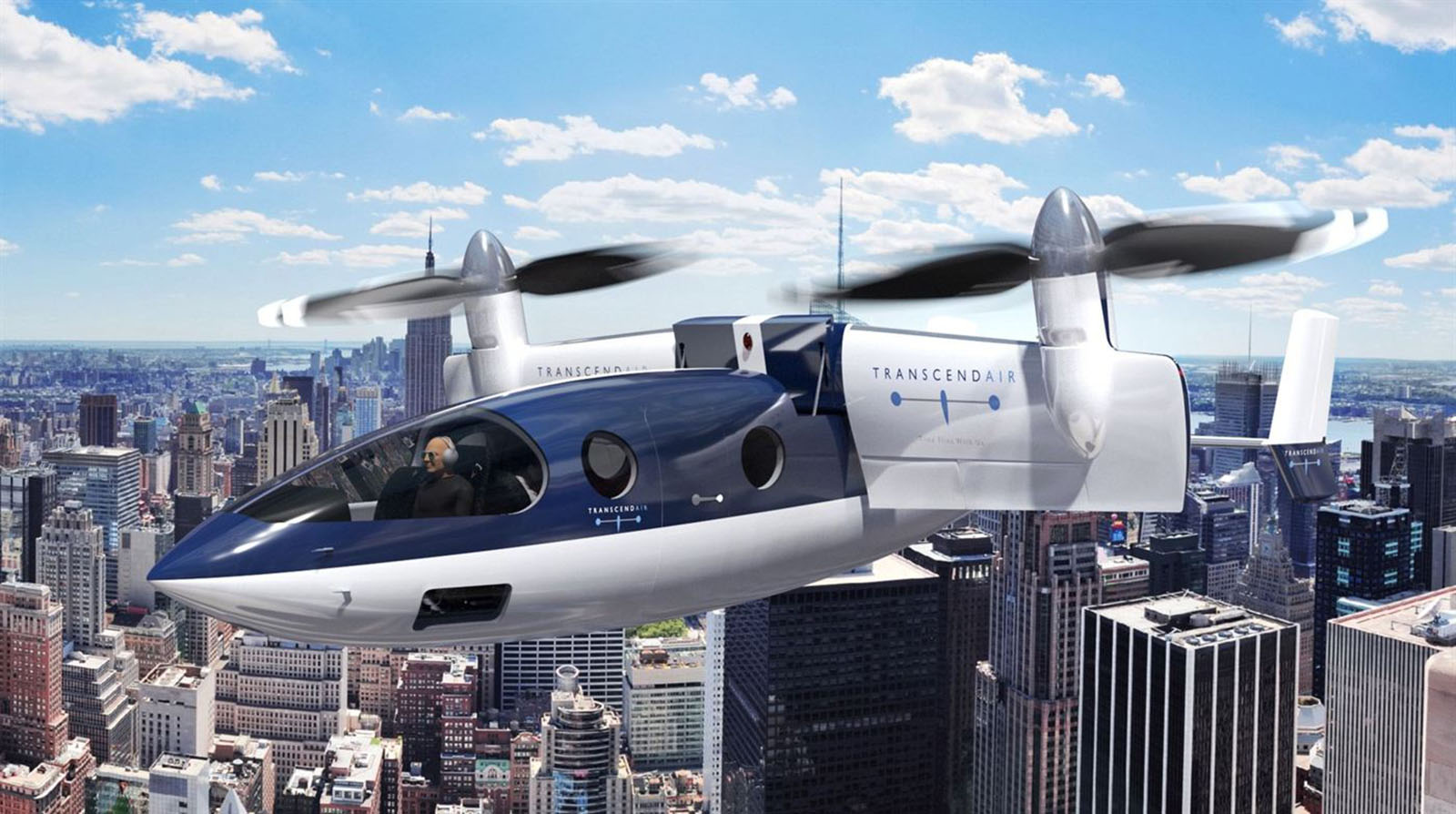Stay Up to Date
Submit your email address to receive the latest industry and Aerospace America news.
Developers extend range for Vy 400 passenger aircraft
Founders of the Massachusetts-based tiltwing aircraft development company Transcend Air say they plan to initiate the process to receive FAA type certification for their gas-powered plane soon, with a goal to begin production in 2027.
That’s two years later than the company had previously said, but co-founders Greg Bruell, CEO, and Peter Schmidt, chief operating officer, say they are confident in their timeline and business plan now.
Bruell and Schmidt attributed the two-year delay on design changes the company undertook based on what was learned through research and development contracts with the U.S. Air Force AFWERX program, but they declined to specify what changes.
“I can say that as we’ve been maturing the design, we’ve been figuring out how we can fit more fuel in there. So we’re actually aiming for a range beyond 500 miles now [800 kilometers],” Bruell says. “We’ve begun conversations with the FAA and talked about the architecture of the aircraft.”
“It’s the most efficient VTOL [vertical takeoff and landing] architecture if you want to go fast, which we want to do. Our cruise speed will be twice that of Joby Aviation,” Schmidt says. “We don’t believe there is an urban air mobility business model that can succeed, unless it’s heavily subsidized by the government.”
Transcend will target regional passenger service, mostly corporate and leisure, with its civilian Vy 400 designed to seat a pilot and five passengers. Military transport and cargo versions are also planned.
The plane would take off and land vertically by tilting the entire wing and accelerate up to 640 kph with a single GE CT7-8 helicopter jet engine turning twin propellers. An electric tail fan would provide stability only during takeoff and landing.
Schmidt says the plane will be much quieter than today’s helicopters.
Transcend plans to target routes between such destinations as New York and Boston, which Schmidt says could be traversed in about 40 minutes — compared to a typical five-hour commute by car. And such service could be door-to-door for locations that already have helicopter facilities.
“Our price point will compete with the total commute price now, which also usually includes two Uber or taxi trips in addition to the airfare,” Schmidt says.
If successful, it would become the only tiltwing aircraft on the market, although at least one other company, Switzerland-based Dufour Aerospace, is developing and testing electric and hybrid tiltwing aircraft.
“The industry has, until now, been designing rotorcraft around hover efficiency because of the power to weight limitations of turbines of the 1960s,” Schmidt says. “But the power to weight ratio for turboshaft engines has doubled, and that’s part of what enables our design. We will use less than half as much power in the hover as we do in high-speed cruise.”
So far, the company has flown several small, remotely piloted electric prototypes and one gas-powered prototype with a pilot on board that also had a boxwing in addition to a tiltwing.
The company anticipates an “uncomplicated” road to certification.
“We’re using components that are already certified everywhere in the aircraft, with the exception of gearboxes and some unique aspects of our flight control software,” Schmidt says.
Get the latest news about advanced air mobility delivered to your inbox every two weeks.
About paul brinkmann
Paul covers advanced air mobility, space launches and more for our website and the quarterly magazine. Paul joined us in 2022 and is based near Kennedy Space Center in Florida. He previously covered aerospace for United Press International and the Orlando Sentinel.
Related Posts
Stay Up to Date
Submit your email address to receive the latest industry and Aerospace America news.




